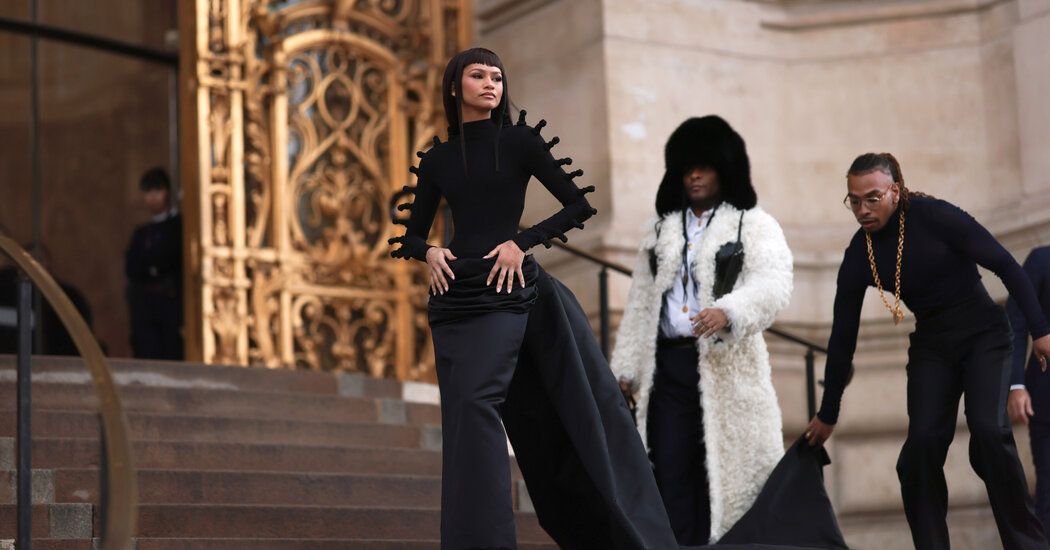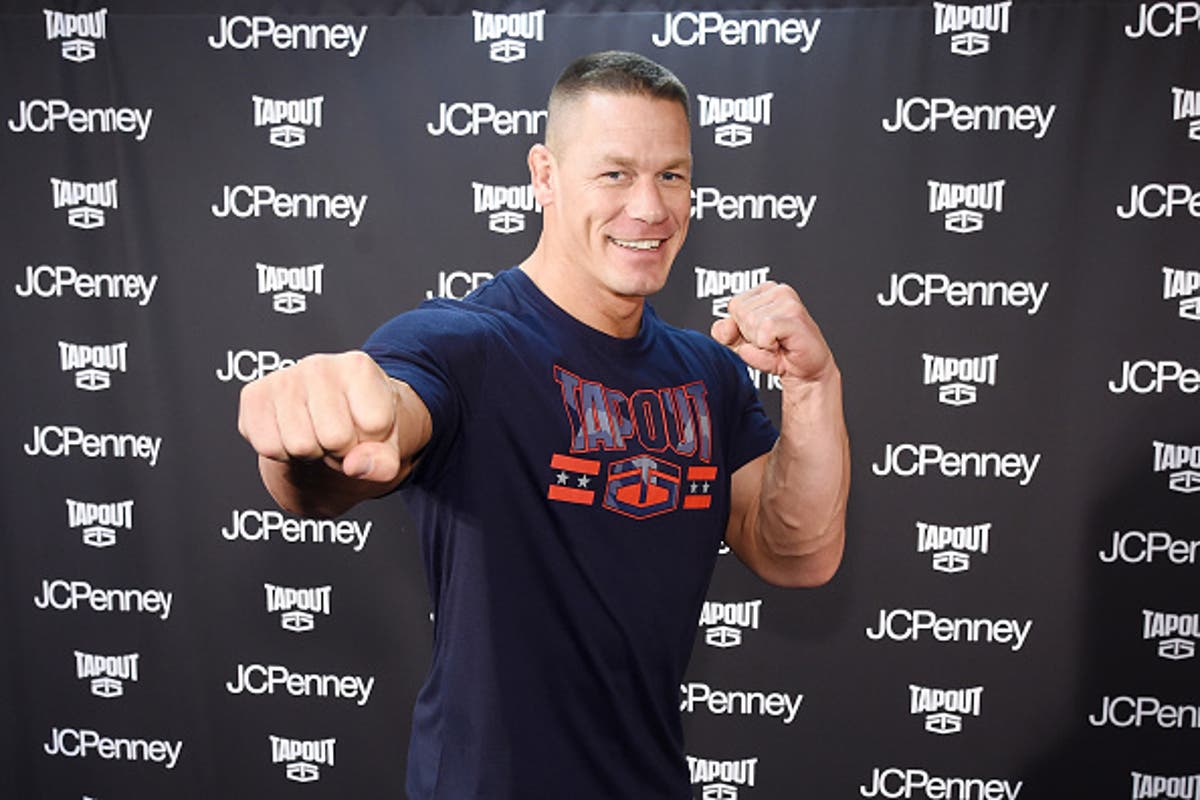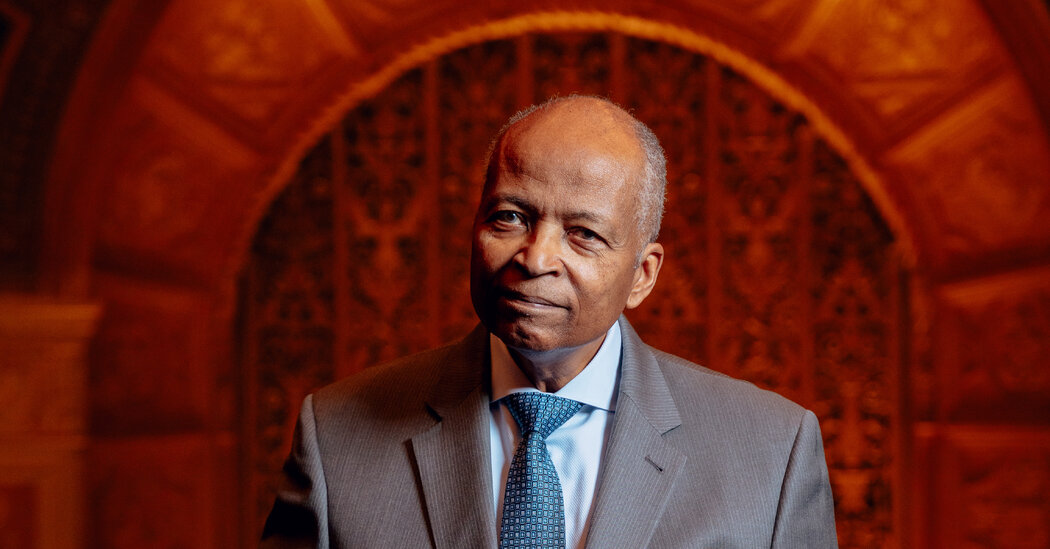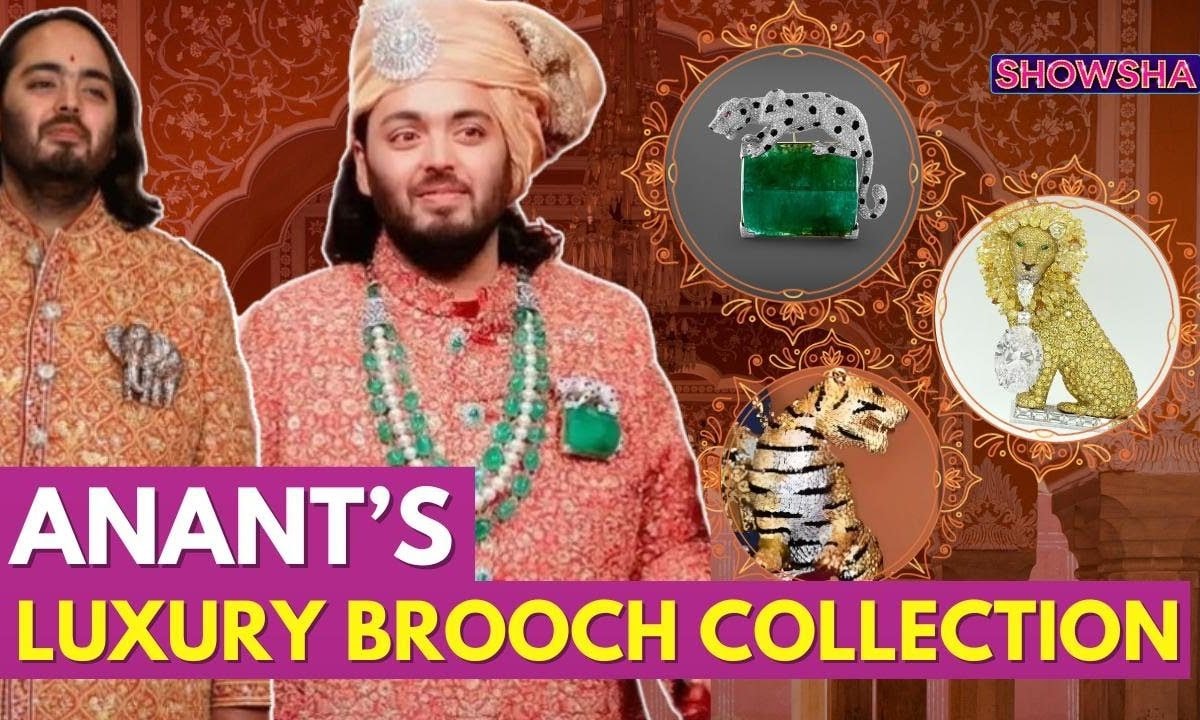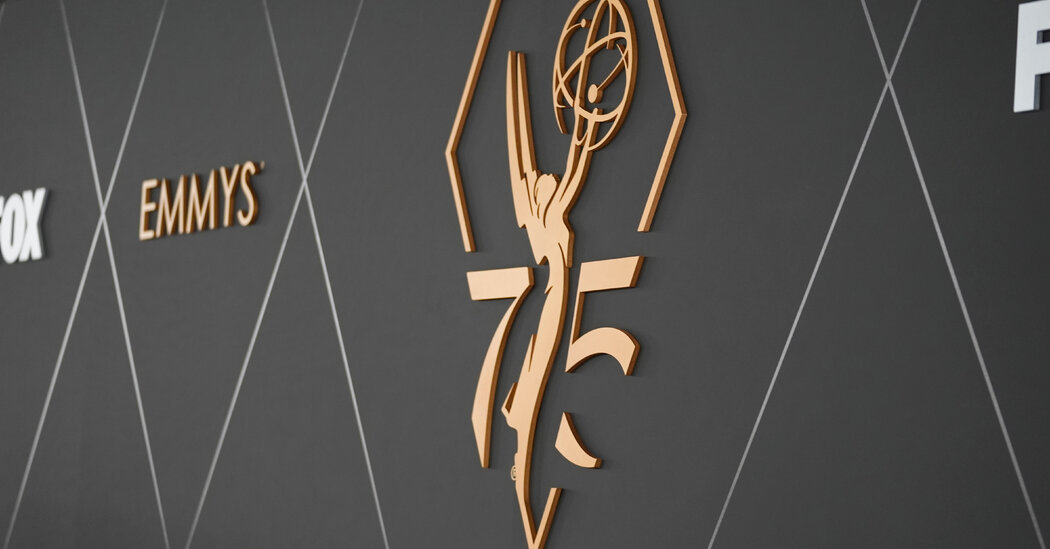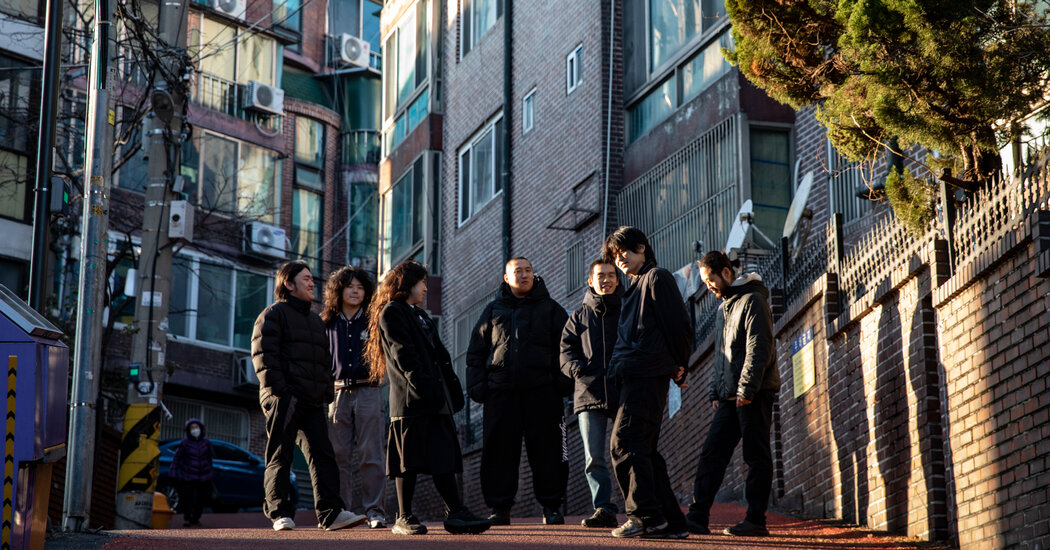The fact that the big Oscar nominations were revealed right in the middle of the Paris couture shows was a coincidence, but fortuitous. After all, since the end of the actors' strike, the red carpet has been a veritable explosion of repressed fashion fantasy. What better place to buy that than in haute couture?
It's no surprise then that celebrities (and their stylists) are back in town, manning the front rows of brands they have relationships with or want to have relationships with or are trying to entice them into relationships.
Here was Zendaya, checking out interplanetary Western attire at Schiaparelli in a fresh-off-the-runway dress with a train that swished like a horse's tail, alongside her creative director, Law Roach; There was Jennifer Lopez, ogling the brand's curvy crystal dress with a paparazzi shield framing her face on one side of it.
Here was Rihanna, making her entrance at Dior, surrounded by so many paparazzi that it was impossible to see her, at least until she stopped in front of Vogue's Anna Wintour to pay her respects before taking in the mid-century-inspired moiré. And there was Gwyneth Paltrow at Armani Privé, where the previous couture collection, a celebration of roses, already provided many awards entrance moments. How to overcome that? With ever-shinier shreds of lace, organza and crystalline net, seemingly fit for a ball for the chinoiserie- and plum-clad mermaids (and the mothers of her brides).
It's no surprise that Chanel's Virginie Viard enlisted one of the brand's ambassadors, Margaret Qualley, to open her show of 1980s ballerinas, held beneath a giant monogrammed button and littered with almond-hued bouclé. Jordan, tights, white stockings and tulle. Qualley has the Grammys, with her husband, musician Jack Antonoff, on her calendar next month. Now you have something to wear!
Still, even off the red carpet, couture is having something of a cinematic moment.
Life imitating art imitating life
As it happens, Glenn Close and Juliette Binoche were also frowning during the shows, as they are among the stars of a limited series, “The New Look,” premiering on Apple TV+ in February. The story of haute couture's post-World War II revival as seen through the prisms of Dior and Chanel, features Ms. Binoche as Coco Chanel and Ms. Close as Harper's Bazaar editor Carmel Snow.
And “Cristóbal Balenciaga,” a biopic of the Spanish designer often called the greatest couturier of all that focuses on the same period and includes cameos from Dior and Chanel, aired on Disney+ just before the shows began (at least in Europe ; in United States). United States, is still waiting for a release date).
Both series focus on the idea of haute couture as a response to the horrors and deprivations of war; a wake-up call for humanity. Given what's happening in the world, you can understand why filmmakers (and the designers who love them) might think it was a good time to revisit this particular period. In any case, everything is starting to look a lot like life imitating art imitating life.
And not only when it comes to galas. The era of luxury sweatshirts and elastic waistbands seems to have come to an end (thank goodness). Dressing up (real dressing, as in the post-war years, when it was synonymous with self-respect) is gaining ground.
At Dior, designer Maria Grazia Chiuri said she was inspired by a 1952 dress by Monsieur Dior known as La Cigale and its counterintuitive juxtaposition of internal structure imposed on wavy moiré. That led to a series of trench coats and dresses elevated to their special status thanks to couturier details (cowl necklines, shawl collars, blouson sleeves) and beaded embroidery. Well, now we're all in the trenches. Button and fasten your seatbelt.
As a backdrop, Chiuri commissioned a series of enormous murals from 94-year-old artist Isabella Ducrot, showing clothing stretched out of proportion. Which, Chiuri said before the show, seemed like a pretty accurate summary of the current moment and its tendency toward extremes. Perhaps in response, she worked small: pleating a column of white silk in the kind of highly complex geometry that can only be done by hand; twisting the neckline of a gold velvet slip; avoiding corsetry due to the structure created through seams.
Chiuri can create a show-worthy look (some of her moiré dresses have “Oscar” written all over them), but they're less interesting than her more intimate explorations. Commentators often complain on social media that her work doesn't look like couture, since the techniques don't read on the small screen. But to paraphrase Gloria Steinem, this is what high fashion looks like. It's a way in which the real world infiltrates.
Beyond celebrities
It makes more sense, in any case, than Viard's decision at Chanel to embrace bright white tights and the current trend toward cropped tops and no pants. Tights, which came with leotards and under classic pastel tweed jackets, often paired with the mesh of a sheer chiffon “skirt” or “pants,” appeared in every look, including a lace peekaboo jumpsuit . Of course, they're very of the TikTok moment, but they can be even shorter than the bride's wedding dress, which looked more like a wedding robe.
At least at Schiaparelli, thoughts about modern technology led Daniel Roseberry down a more ambitious path, one that involved news about AI coming out of the United States; his own Texas roots, as well as Elsa Schiaparelli's roots (she also appears in the “Balenciaga” series); and the fact that his uncle, Giovanni Schiaparelli, was director of the Brera Observatory in Milan and discovered the trenches on Mars.
That led Roseberry (naturally) to think about “Alien,” the 1979 film, and its sequels, all of which he has seen, he said during a trailer, at least six times. And that led to a somewhat chaotic mix of the surreal, the Martian and the cowboy.
The jackets came with bandanna prints, floor-length fringes, and armor-sized buckles; Decorative knots emerged from oversized sleeves. A cocktail dress was made from hundreds of recycled fragments of pre-2007 technology (motherboards, computer chips, flip phones) that had been bedazzled to within an inch of its future life; So was a doll the size of a toddler, carried by a model in white cargo pants and a tank top.
Roseberry has become a celebrity magnet thanks in part to her ability to dominate the social media moment (i.e. that doll), but it's her simplest outfit that cuts through the noise: a black velvet bombshell dress without straps framed by nude knit drapes; high-waisted black pants under a white shirt with powerful shoulders and a sharp pencil holding the neck like a sword. Or a point.
One that goes beyond the red carpet and directly into the contemporary condition. Greta Gerwig, controversially rejected as best director by the Film Academy despite her many other nominations for “Barbie,” could hold that position with aplomb.

